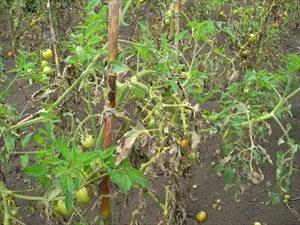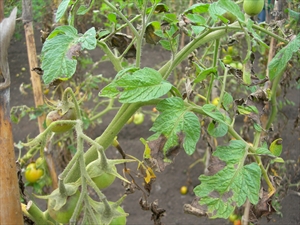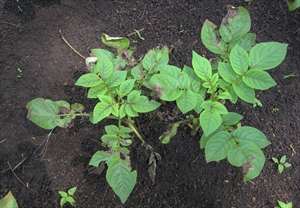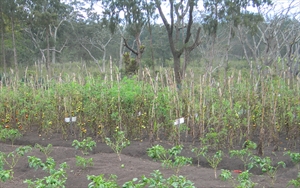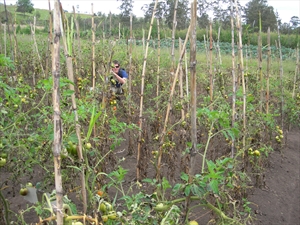- Worldwide distribution. On tomato, potato and wild species in the potato family. There is evidence of strains attacking different hosts. An important disease.
- A water mould, or oomycete, not a fungus.
- Irregular patches on leaves; white cottony growth with spores on undersides. Leaves yellow, shrivel and fall. Dark brown, firm fruit rot. Worse in cool, wet weather.
- Spread by wind or wind-driven rain, up to 20 km; and on seed for planting.
- Cultural control: check plants in nursery; avoid planting near older plants; space plants to aid air movement; intercrop; stake; mulch; drip rather than overhead irrigation; tolerant varieties; crop rotation.
- Chemical control: copper, mancozeb or chlorothalonil, alone, or alternate with, e.g., metalaxyl, cymoxanil, dimethomorph or strobilurins. Phosphorus acid either alone or with chlorothalonil.
